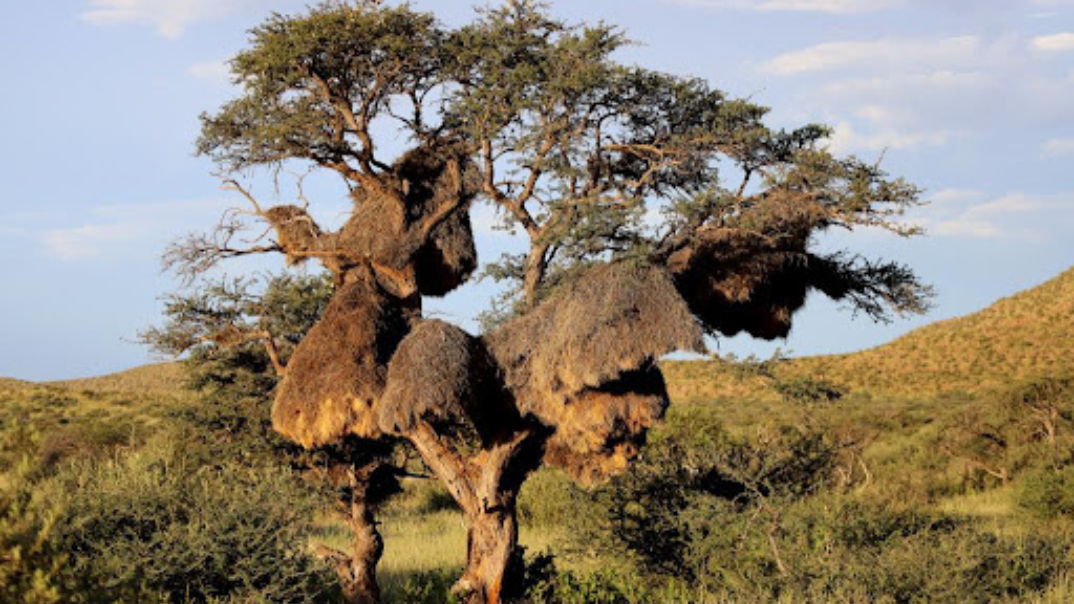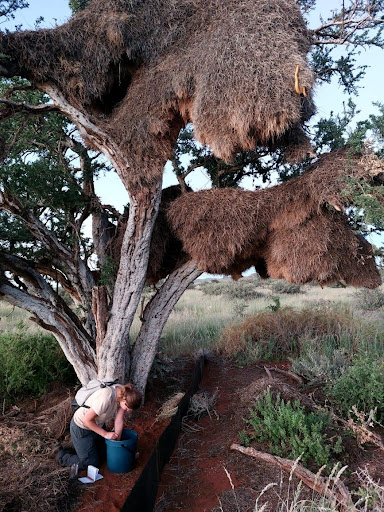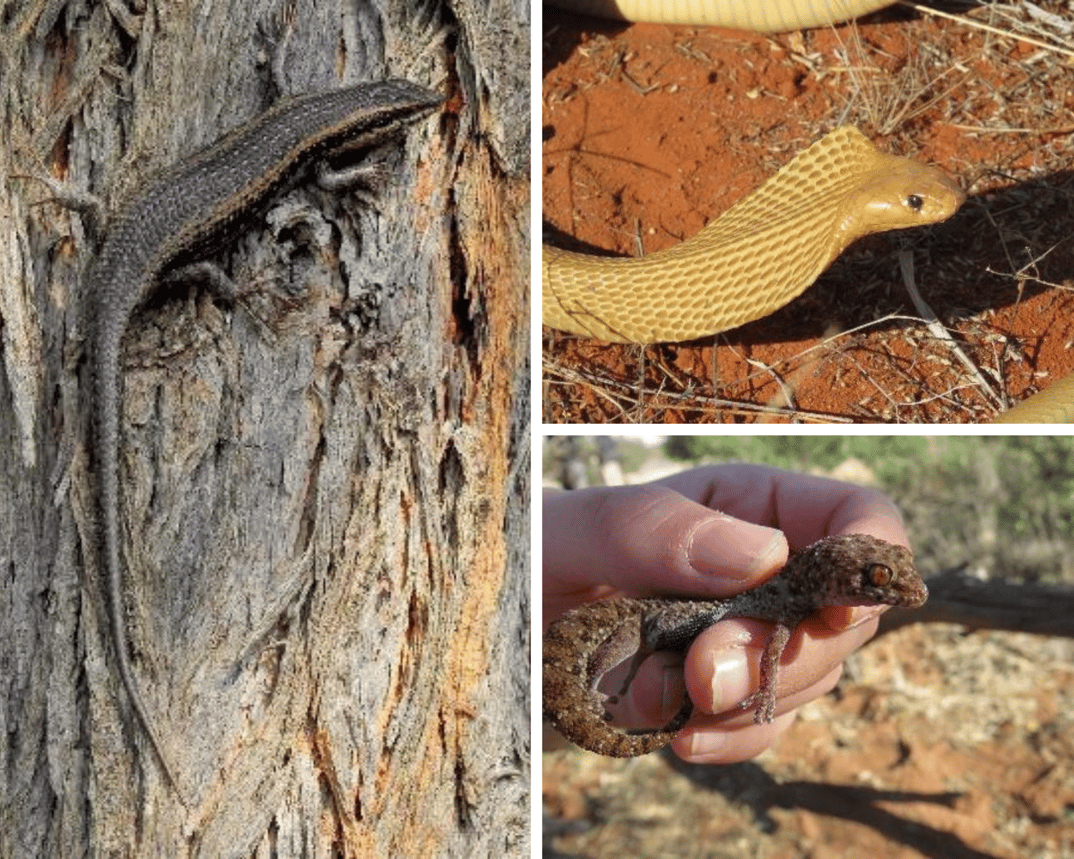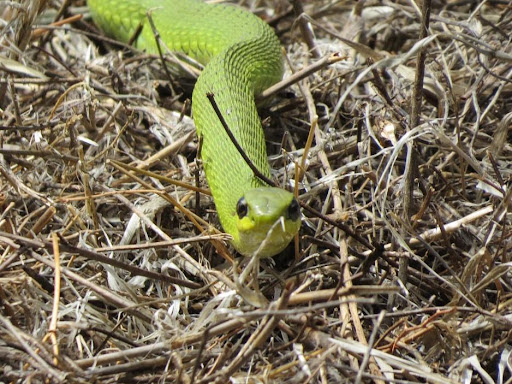 A sociable weaver nest in a camelthorn tree with (inset) a sociable weaver and a Kalahari tree skink at Tswalu Kalahari Reserve (Photo by Bryan Maritz).
A sociable weaver nest in a camelthorn tree with (inset) a sociable weaver and a Kalahari tree skink at Tswalu Kalahari Reserve (Photo by Bryan Maritz).
Sociable weavers are small birds that build huge nests that are home to hundreds of birds. In the Kalahari, these nests are not only used by the weavers, but also by several other animals, including other birds, mammals, and reptiles. Scientists have long known that trees with sociable weaver colonies hold a larger number of Kalahari tree skinks, but the impact of these colonies on other reptiles is unknown. Now, as part of the Kalahari Endangered Ecosystem Project (KEEP), Emma Buckley, an MSc student from the University of the Western Cape, is investigating the impact of sociable weaver colonies on other reptile populations and diversity.

Emma Buckley weighing and measuring lizards while a Cape cobra searches for food in the sociable weaver colony above her head (Photo by Bryan Maritz).
With the support of Suzuki South Africa and the Tswalu Foundation, Emma trapped reptiles at Tswalu Kalahari Reserve under trees with sociable weaver colonies and similar nearby trees without colonies. Trapping took place over two periods – once in late summer when the sociable weavers were breeding and once in early summer when they were not.

A Kalahari tree skink, Cape cobra and Cape thick-toed gecko (Photo by Emma Buckley)

Going out into the field with the reliable Jimny, supported by Suzuki SA (Photo by Bryan Maritz).
Trapping resulted in several hundred individual reptiles being located. Emma found that the average number of reptile species captured at colony trees was much higher than at non-colony trees, regardless of whether the birds were breeding. Kalahari tree skinks and Cape thick-toed geckos were much more abundant on colony trees during both seasons. In contrast, Cape cobras were more abundant on colony trees during the breeding season, but showed no difference in abundance between colony and non-colony trees in the absence of sociable weaver breeding.

A boomslang on top of a sociable weaver colony (Photo by Emma Buckley).
Emma’s findings suggest that the two lizards she commonly found use colony trees for both food and shelter, whereas cobras seems to use colony trees primarily for food. The work reveals that sociable weaver colonies can influence reptiles by changing the landscape through creating a habitat for other animals to live in and by providing food. So, next time you are driving through the Kalahari, consider that the iconic nests are crucial for the survival of many animals. If you get a chance to pull up under a nest, see if you can spot a lizard or snake, in amongst the noisy weavers.


